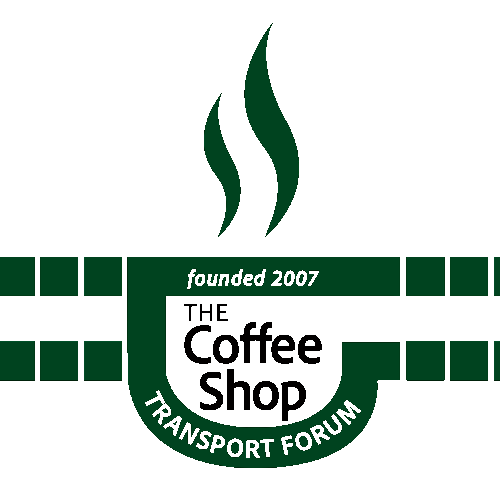| Re: Motor Luggage Vans [otd 15.4.1951] Posted by Electric train at 17:12, 17th April 2023 |     |
Did not realise that motor luggage vans were only 500 HP and not 1,000. 500 HP could still be very useful though.
Retrofitting a modern battery should be easy.
Retrofitting a modern battery should be easy.
Especially if the inefficient DC serial motors and resistor start network is replaced with ployphase squirrel cage AC motors and a VFD
| Re: Motor Luggage Vans [otd 15.4.1951] Posted by Mark A at 12:49, 17th April 2023 |     |
Back in 2017, Cummins re-engined a London Routemaster to demonstrate that it was possible to bring it up to Euro VI emission standards. Details at https://www.busandcoachbuyer.com/euro-vi-retrofit-future/. Admittedly the Routemaster in question belonged to a certain Peter Hendy.
Alas, we're probably too late for one of the battery manufacturers to do a similar retrofit on one of the preserved Motor Luggage Vans.
Alas, we're probably too late for one of the battery manufacturers to do a similar retrofit on one of the preserved Motor Luggage Vans.
This put me in mind of the trial run with a bolinder-powered oil tanker using HVO fuel.
Ran very sweetly and with less than the usual amount of hassle with the engine's 'Injector'...
Mark
https://www.crownoil.co.uk/case-studies/an-english-heritage-boat-the-showpiece-for-100-renewable-hvo-fuel/
| Re: Motor Luggage Vans [otd 15.4.1951] Posted by broadgage at 09:33, 17th April 2023 |     |
Did not realise that motor luggage vans were only 500 HP and not 1,000. 500 HP could still be very useful though.
Retrofitting a modern battery should be easy.
| Re: Motor Luggage Vans [otd 15.4.1951] Posted by Worcester_Passenger at 08:50, 17th April 2023 |     |
Back in 2017, Cummins re-engined a London Routemaster to demonstrate that it was possible to bring it up to Euro VI emission standards. Details at https://www.busandcoachbuyer.com/euro-vi-retrofit-future/. Admittedly the Routemaster in question belonged to a certain Peter Hendy.
Alas, we're probably too late for one of the battery manufacturers to do a similar retrofit on one of the preserved Motor Luggage Vans.
| Re: Motor Luggage Vans [otd 15.4.1951] Posted by stuving at 19:50, 16th April 2023 |     |
Note that these battery MLVs only had 2x250 HP motors, not four. They really were only required to shift themselves (and perhaps a couple of trailers) at very slow speed off the electrified track. Also, the Kent Rail write-up says they were charged by a 200V motor-generator. Given how little power electronics was available at the time (i.e. essentially none), this might have been done to provide charging current control, using an off-the-shelf component. But what the battery voltage might be is not clear. It might have been 600V, split into three sections for charging. However, I suspect it was 200V - enough to move the train at low speed. Starting current would be a more critical requirement than enough volts to get to 90 mph.
| Re: Motor Luggage Vans [otd 15.4.1951] Posted by broadgage at 18:42, 16th April 2023 |     |
AFAIK, lead acid batteries were used originally
Modern lithium batteries would give about four times the capacity for a similar bulk and weight. The range might be six times greater, due to differing capacities at different discharge rates.
| Re: Motor Luggage Vans [otd 15.4.1951] Posted by Bmblbzzz at 18:27, 16th April 2023 |     |
The Southern Railway E-mail Group at https://sremg.org.uk/emu/class419.shtml has an interesting item about the operational use of these units when running on their own on mail and parcels trains in the 1980s. At that time the Redhill - Tonbridge line was not yet electrified:
Modern battery-electric units please note!
What sort of batteries did these use? Battery technology has come on massively since the 1980s, so it would be interesting to try that same route with eg one of the Vivarail battery electrics being trialled. Several different sources state that an overnight mail train from London Bridge to Ashford was diagrammed for a MLV and this was diverted regularly via Redhill due to engineers possessions. When so routed it was booked to have loco assistance from Redhill to Tonbridge, but on a few occasions when there was no loco available it had run from Redhill to Tonbridge using the traction battery supply. This required the co-operation of the local signalmen as a signal stop at Godstone, Edenbridge, Penshurst or outside Tonbridge would almost certainly mean the train would be unable to restart again, and a clear run was essential. These must have been the longest runs attempted on battery power, this line being virtually flat.
Modern battery-electric units please note!
| Re: Motor Luggage Vans [otd 15.4.1951] Posted by broadgage at 11:35, 16th April 2023 |     |
Elsewhere on these forums, I have suggested that the larger heritage railways should be "greened" in various ways, including the use of a battery locomotive for shunting and ECS moves.
Perhaps an already existing motor luggage van could be used instead, certainly cheap if the vehicle already exists. Modern lithium batteries could be retrofitted so as to give several times the range.
The power output is limited to about 1,000 HP by the capacity of the existing traction motors, but with lithium batteries, this 1,000 HP could be maintained for several hours rather than the 20 or 30 minutes of the originally used lead acid batteries.
Overnight charging from a 3 phase 63 amp supply should be possible, and even a domestic 13 amp socket could eventually charge an MLV, would take days though.
| Re: Motor Luggage Vans [otd 15.4.1951] Posted by broadgage at 09:34, 16th April 2023 |     |
As a significant number of these motor luggage vans still exist, has anyone considered adding one to a mainline steam special ?
Being able to supply an extra 1,000 HP for a short time could be very useful indeed, for prompt starting after stops or under other adverse conditions.
The MLV could double as the support coach, thereby not increasing the length of the train. Slam doors should be acceptable if not used to convey the public.
Charging en-route is unlikely to be viable, but starting with a fully charged battery, and limiting use to brief intervals when the steam loco would otherwise struggle could be very helpful.
"First hybrid steam/battery train"
| Re: Motor Luggage Vans [otd 15.4.1951] Posted by Worcester_Passenger at 04:06, 16th April 2023 |     |
The Southern Railway E-mail Group at https://sremg.org.uk/emu/class419.shtml has an interesting item about the operational use of these units when running on their own on mail and parcels trains in the 1980s. At that time the Redhill - Tonbridge line was not yet electrified:
Several different sources state that an overnight mail train from London Bridge to Ashford was diagrammed for a MLV and this was diverted regularly via Redhill due to engineers possessions. When so routed it was booked to have loco assistance from Redhill to Tonbridge, but on a few occasions when there was no loco available it had run from Redhill to Tonbridge using the traction battery supply. This required the co-operation of the local signalmen as a signal stop at Godstone, Edenbridge, Penshurst or outside Tonbridge would almost certainly mean the train would be unable to restart again, and a clear run was essential. These must have been the longest runs attempted on battery power, this line being virtually flat.
Modern battery-electric units please note!
| Motor Luggage Vans [otd 15.4.1951] Posted by grahame at 17:14, 15th April 2023 |     |
The British Rail Class 419 Motor Luggage Vans (or MLV) were battery electric multiple unit cars built from 1951-61 by BR at Eastleigh Works. The first one entered service around 15th April 1951 and so I've chosen to add it to "on this day" for this day. I member then attached to 12 car Victoria to Dover Marine express boat trains, then able to work under battery power along the quayside.
No fewer that 8 out of the 10 built still survive in preservation
See ... https://www.kentrail.org.uk/class_419_MLV.htm ... rumour is that pictures exist of them clean as well.










